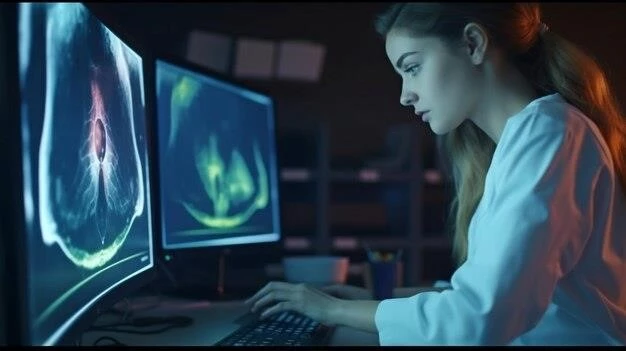Research and Advances in Cryptococcosis Treatment
Research in treating Cryptococcosis is ongoing, focusing on improving current antifungal medications and developing new treatment strategies to combat drug resistance.
Causes of Cryptococcosis
Cryptococcosis is caused by inhaling the fungus Cryptococcus, commonly found in soil contaminated with bird droppings. The two main species affecting humans are Cryptococcus neoformans and Cryptococcus gattii. Those with weakened immune systems are at higher risk.
The fungus can enter the body through the respiratory tract and, in rare cases, through the skin. Individuals with compromised immune systems, such as HIV/AIDS patients, organ transplant recipients, and those on immune-suppressing medications, are more susceptible to developing cryptococcosis.
Factors contributing to the risk of infection include advanced age, diabetes, cancer, and existing pulmonary conditions. Occupational exposure to environments contaminated with bird droppings or soil increases the likelihood of coming into contact with Cryptococcus.
Understanding the sources of Cryptococcus and minimizing exposure to contaminated areas, particularly for at-risk individuals, is essential in preventing cryptococcosis infections. Proper precautions, such as wearing masks and gloves in high-risk environments, can help reduce the chances of contracting the fungus.
Symptoms and Diagnosis of Cryptococcosis
The symptoms of Cryptococcosis vary depending on the area of the body affected. Infection commonly presents in the lungs or central nervous system. Respiratory symptoms may include cough, chest pain, and shortness of breath. When the central nervous system is involved, symptoms can include headaches, confusion, nausea, and blurred vision.
Diagnosis of Cryptococcosis involves various tests, such as blood cultures, cerebrospinal fluid analysis, imaging scans, and biopsies. Identification of Cryptococcus fungus in these samples confirms the infection. For central nervous system involvement, a lumbar puncture is often performed to analyze cerebrospinal fluid.
Early detection is crucial for effective treatment. Physicians may consider the patient’s medical history, symptoms, and risk factors during the diagnostic process. Prompt recognition of Cryptococcosis helps prevent the progression of the infection to severe forms, which can be life-threatening, especially in immunocompromised individuals.
Timely diagnosis allows healthcare providers to initiate appropriate antifungal therapy and monitor the patient’s response to treatment. Awareness of the common symptoms and diagnostic procedures can aid in the early identification and management of Cryptococcosis cases.
Treatment Options for Cryptococcosis
The treatment of Cryptococcosis typically involves antifungal medications to eliminate the fungal infection. Common antifungal drugs used include amphotericin B, flucytosine, and fluconazole. The choice of medication and duration of treatment depend on the severity of the infection and the patient’s health status.
In severe cases, a combination of antifungal agents may be prescribed to enhance efficacy and reduce the risk of resistance development. Antifungal therapy is often administered for an extended period, sometimes up to a year, to ensure the elimination of the fungus from the body.
In cases of central nervous system involvement, treatment may require hospitalization for close monitoring and intravenous administration of medications. Surgical interventions are rare but may be necessary in specific circumstances, such as the presence of large Cryptococcus-related masses.
Patient response to treatment is regularly assessed through laboratory tests and clinical evaluation. Adjustments to the medication regimen may be made based on the individual’s progress and any potential side effects experienced. Adherence to the prescribed treatment plan is vital for successful recovery and to prevent disease recurrence.
Prevention of Cryptococcosis Infection
Preventing Cryptococcosis involves minimizing exposure to environments where the Cryptococcus fungus thrives, such as areas contaminated with bird droppings or soil. Individuals with weakened immune systems should take extra precautions.
- Avoid inhaling dust associated with soil or bird droppings.
- Wear masks and gloves when working in high-risk settings, such as construction sites or agricultural areas.
- Maintain good hygiene practices, including frequent handwashing, especially after outdoor activities.
- Ensure proper ventilation in indoor spaces to reduce the buildup of airborne contaminants.
- Seek medical advice if experiencing respiratory symptoms or other signs of infection.
For individuals with conditions that compromise the immune system, such as HIV/AIDS or organ transplant recipients, following medical recommendations and treatment plans diligently is crucial in reducing the risk of Cryptococcosis.
Educating individuals about the sources of Cryptococcus and promoting preventative measures are essential steps in preventing infections. Public health initiatives focusing on awareness and protection can contribute to lowering the incidence of Cryptococcosis.

Cryptococcosis in Immunocompromised Patients
Immunocompromised individuals, such as those with HIV/AIDS, organ transplant recipients, and individuals undergoing immunosuppressive therapy, are at increased risk of developing Cryptococcosis. The weakened immune system makes it harder for the body to fight off the Cryptococcus fungus.
For patients with compromised immunity, Cryptococcosis can be more severe and lead to complications, particularly if the infection spreads to the central nervous system. Early detection and prompt treatment are crucial in managing Cryptococcosis in immunocompromised patients.
Healthcare providers closely monitor immunocompromised individuals for any signs or symptoms of Cryptococcosis, especially if they are known to be at a higher risk. Diagnosis may involve a range of tests, including blood cultures and cerebrospinal fluid analysis.
Treatment in immunocompromised patients often requires aggressive antifungal therapy and careful monitoring for potential drug interactions or side effects. Adherence to the prescribed treatment regimen is essential for successful outcomes in this vulnerable population.
Supportive care and addressing the underlying immune deficiency are also important aspects of managing Cryptococcosis in immunocompromised patients. Collaborative efforts between healthcare professionals play a vital role in providing comprehensive care and improving outcomes for these individuals.
